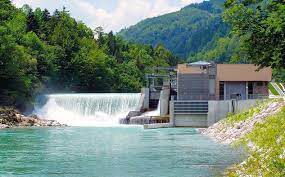A startup company has received $18.4 million to build up its carbon-free hydropower technology. The company uses small turbines installed in irrigation canals to produce electricity.
According to Emily Morris, CEO and founder of Emrgy, she was inspired to create electricity in locations that some people might consider impossible after observing water moving quickly through the extensive system of irrigation infrastructure in the United States. 1,600 miles of primary canals are run by the U.S. Bureau of Reclamation alone.
Using existing canals means the hydropower turbines don’t have to affect the environment, much like installing solar on rooftops prevents disturbing the land.
In an interview, Morris stated that “our infrastructure represents a new sector of renewable energy real estate.”
Concrete or stone irrigation canals in the United States carry water from major sources to farmland. Emrgy units resemble propellers because their blades rotate parallel to the ground. There is no dam; water simply flows past the canals after turning them. Emrgy collaborates closely with water operators because the rotating turbines do delay the flow of water via the canals.
Between 2 and 10 megawatts, Emrgy’s projects are quite tiny in a commercial sense. However, that would roughly be sufficient to power a small campus or a neighborhood.
Given the miles of canals, it “can amount to a pretty significant amount of power,” according to John Gulliver, an engineering professor emeritus at the University of Minnesota.
The company would never deploy a single turbine, just as a solar company would never put a single solar panel on a roof. Instead, Morris claimed, the company would build installations made up of modules that produce 5–25 kilowatts of power each.
Dan Reicher, a senior scholar at Stanford University’s School of Sustainability, stated that “we need everything we can get from all the renewable energy sources.” “Therefore, I believe that this energy generation is important.” He added that it has a minimal influence on the environment.
A similar point was stated by University of Washington engineering professor Daniel Kirschen. “It’s very useful if we can generate a reasonable amount of power from them,” he remarked.
The environmental effects of conventional large-scale hydropower projects, which include flooding villages, slowing rivers, and obstructing fish migration, have come under criticism. A few are being demolished. On the other hand, as long as it rains and snows, they produce vast amounts of energy.
The Emrgy installations are connected to the grid similarly to other distributed solar or wind systems. Sometimes, power distribution cables follow canals exactly. The turbines don’t require lengthy permissions and can be deployed rapidly.
“I’ve watched how solar has risen to dominate the renewable energy mix over recent years,” Morris added. We are aware that we will have a greater influence and be able to expand if we can produce new power more quickly.
Currently, Denver Water, Oakdale Irrigation District in California, a district in Salt Lake City, and a district in New Zealand are using Emrgy’s technology. The business is growing and has a pilot in South Africa.
With the $18.4 million, more workers will be hired, projects will be developed, and the first assembly factory will be launched in Aurora, Colorado.
The last fall’s passage of the Inflation Reduction Act is beneficial. It provides incentives for the clean energy industry in the United States. Emrgy receives a 10% tax credit for purchasing its equipment and parts domestically and a 30% federal investment tax credit for the development of renewable energy sources.
It’s wonderful that they have an economical option, and this is undoubtedly a renewable resource that has to be used.


















